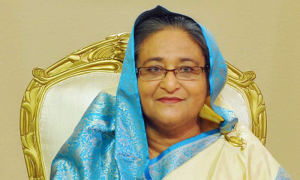Key points
- Pakistan’s once-feared bowling attack now struggles to finish games
- Overuse of part-timers and weak captaincy hurt match control
- Underperformers retained; in-form players ignored
- Resistance to new talent blocks team progress
For decades, Pakistan’s cricketing identity was built on its bowling might. From the fastest bowler in the world to the “Sultan of Swing”, Pakistan’s pace tradition has been the envy of the cricketing world. Even when the batting faltered, Pakistan’s bowling — often a blend of fiery pace and guile — could defend modest totals with unnerving regularity.
But over the past five to six years, that narrative has shifted. Pakistan have increasingly found themselves on the wrong side of chases and defendable totals, unable to land decisive blows when it matters most. Opposing batting line-ups — once wary of the green shirts’ pace battery — now approach them with calculated aggression.
The trend was once again on display during the recent ODI series against the West Indies. In the second ODI, Pakistan allowed the hosts to recover from a perilous position, gifting momentum through loose bowling changes and part-time options. In the third, the pattern repeated, culminating in the West Indies’ first bilateral ODI series win over Pakistan in 33 years.
Tactical missteps
In the second ODI, Pakistan’s start was ideal. Hasan Ali removed both openers early, and leg-spinner Abrar Ahmed dismissed Karty to leave the West Indies three down inside 14 overs — still under 50 and with the required rate climbing.
This was the moment to tighten the screws. Instead, captain Mohammad Rizwan turned to Saim Ayub and Salman Agha — neither frontline bowlers — who promptly leaked 21 runs in quick time. The pressure evaporated. Ayub and Agha bowled seven overs for 66 runs without a wicket, while Nawaz and Abrar, operating on the same pitch, combined for 14 overs, conceded just 40, and took three wickets.
The third ODI told a similar story. At 175 for 4 after 40 overs, the West Indies should have been restricted to a manageable total. Yet Rizwan persisted with Ayub and Talat to complete the fifth-bowler quota, and the final 10 overs cost Pakistan 115 runs as the seamers were punished at the death.
Over-reliance on part-timers
Cricket statistician Mazhar Arshad has been blunt in his assessment: “Salman Agha’s bowling average over his last 10 ODIs is 113.00, while Faheem Ashraf’s is 73.40. Hard to see why Pakistan would want to plan 10–20 overs around them. In white-ball cricket, Pakistan keeps building strategies around part-time bowlers — a very risky approach.”
Part-timers’ numbers in 2025 are stark:
- Salman Agha – average 147.00
- Khushdil Shah – average 105.00
- Saim Ayub – average 81.90
These are not supplementary overs — they’ve been pivotal phases in matches, often undoing the groundwork laid by the frontline bowlers.
Pace attack losing its edge
Perhaps the most troubling shift is in Pakistan’s pace reputation. The trio of Shaheen Shah Afridi, Haris Rauf, and Naseem Shah — expected to carry the mantle — have repeatedly fallen short in key moments.
In the 2021 T20 World Cup semi-final, Matthew Wade took Shaheen apart in the 19th over. After his injury in 2022, Afridi has struggled to dominate at the highest level, conceding heavily on India’s batting-friendly surfaces during the 2023 World Cup.
In the 2024 T20 World Cup, Pakistan’s defence of 159 against the USA unravelled when Rauf failed to protect 15 runs in the final over; Shaheen had already gone for 33 in his spell.
The vulnerability is not confined to ICC events. New Zealand’s Finn Allen and Tim Seifert have repeatedly targeted Shaheen in recent series, even when he had the new ball in hand. Rauf’s economy and control have wavered across all phases of the innings — particularly in the last three ICC tournaments, where he was among the most expensive bowlers on show.
Selection under scrutiny
Performance alone hasn’t dictated selection. Mohammad Wasim Jr, statistically one of Pakistan’s better ODI bowlers in terms of strike rate and average post-2023 World Cup, was sidelined without clear explanation. Meanwhile, those who underperformed in the World Cup returned for the 2025 Champions Trophy — a tournament Pakistan went on to lose.
This comes in the wake of other setbacks: losing a tri-series to New Zealand and South Africa, being swept by New Zealand at home, and now succumbing to the West Indies in a bilateral ODI series for the first time since 1992.
Call for a reset
Following Pakistan’s Champions Trophy defeat to India, former captain Mohammad Hafeez didn’t mince words: “Shaheen, Naseem, and Haris have not delivered in the Asia Cup 2023, the ODI World Cup, the T20 World Cup, or the Champions Trophy 2025. According to many, they have the skills — but those skills have yet to win Pakistan a major tournament. They haven’t proved themselves when it matters most.”
Hafeez urged selectors to blood new names — Mohammad Ali, Khurram Shahzad, Wasim Jr, Akif Javed, and Mir Hamza — to inject hunger and resilience into the attack.
Untapped potential
Pakistan’s bench strength has been under-utilised. In the spin department, Sufyan Moqim has been left out even on spin-friendly tracks, while part-timers like Salman Agha and Saim Ayub shoulder more overs. Shadab Khan and Mohammad Nawaz have been recalled and persisted with despite prolonged dips in form, blocking opportunities for others.
On the pace front, Salman Mirza and Ahmed Danyal — impressive in Bangladesh — have been overlooked, as have consistent performers like Abbas Afridi and Khurram Shahzad.
The pattern points to a deep-seated reluctance to move beyond established names, even when both results and statistics demand a reset. A change in personnel may not instantly restore Pakistan’s lost bowling glory, but taking decisive steps in the right direction could reduce the frequency of costly failures and make the side more competitive. At present, Pakistan rarely secures victories against the top eight teams — a stark indicator of the gap that must be bridged.


























